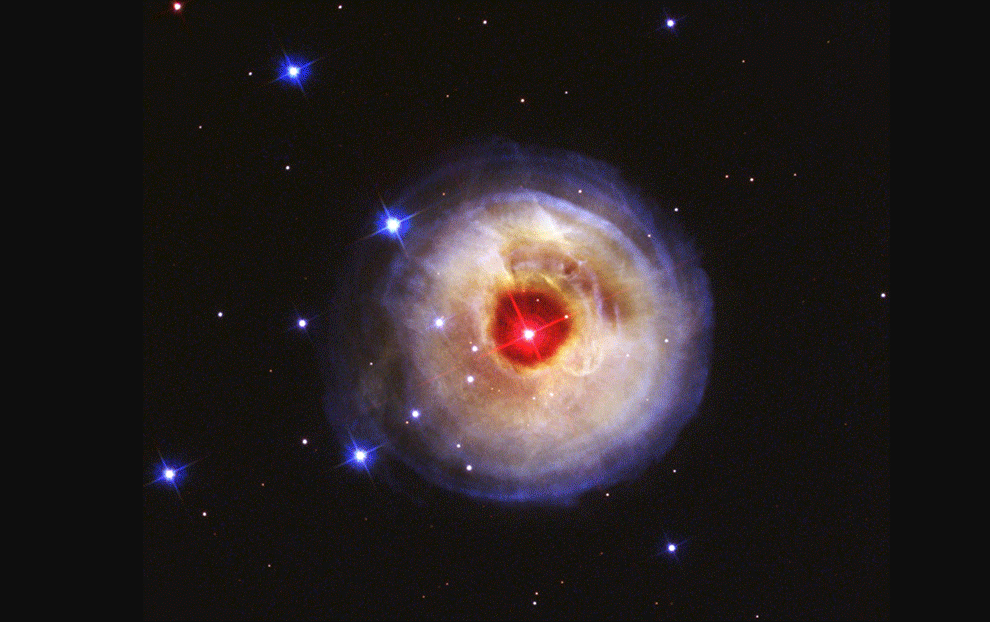 This is a star called V838 Monocerotis. This normally dim and obscure star had a big brightness outburst in 2002 and got about 600,000 times brighter than our Sun for a brief time. It is now back to its normal boring dimness. What we are seeing here is called a light echo.
This is a star called V838 Monocerotis. This normally dim and obscure star had a big brightness outburst in 2002 and got about 600,000 times brighter than our Sun for a brief time. It is now back to its normal boring dimness. What we are seeing here is called a light echo.When the star got really bright, it gave off light in all directions. Some headed toward us (which we saw already) and some that headed off in different directions bounced off dust in the area and got reflected toward us. Since this light is taking a longer path to us, it takes longer to get to us. That is what we are seeing in this image: the movement of the light echo.
The light echo gets dimmer as time goes on. You may notice the background stars appear brighter in the later images. Since the light echo is so much dimmer, they take longer exposures to see the light echo and the background stars appear brighter. In reality, they have not changed and would look the same if you kept the same exposure time (but then you wouldn't see the light echo which is what they are interested in!)
I won't be able to blog every one, so check back every day for the next picture on the Hubble Advent Calendar.
Reprinted with permission from the Half-Astrophysicist Blog.





6 comments:
Cool, unfortunately, my own personal brightness outburst occurred late in the 70's. I've been dimming ever since...
Cool gif. Uh, any idea what caused the "brightness outburst" on V838 Monocerotis? I mean, could our sun just suddenly get 600,000 times brighter for a brief time? That could spoil your day.
Very cool!
I used to get a space calendar from.. the name escapes me now.. the big one with the magazine. *embarrassed*
(blame the drugs I am on)
Well, orbs, this is a bit of a mystery object. It doesn't match the classical nova brightening. This is a double star system so some sort of interaction could have occurred. Another idea is that it ate one of its gas giant planets which could have caused a bunch of deuterium (an isotope of hydrogen) to fuse and cause the outburst.
The good news is that this star is quite a bit different from out Sun so our Sun is unlikely to do any of these things!
This sort of reminds me of my colonoscopy.
That was just an amazing photo! The universe has SO much to explore.
Post a Comment